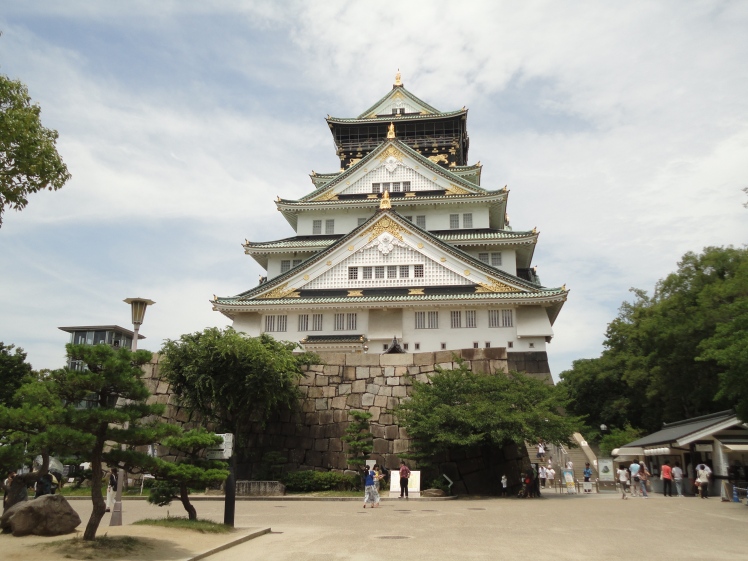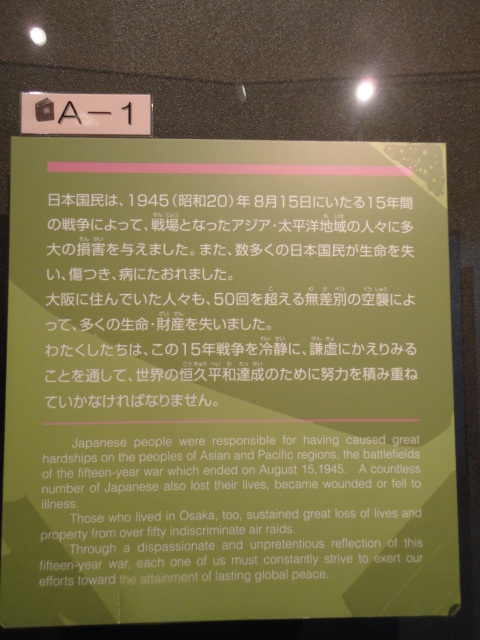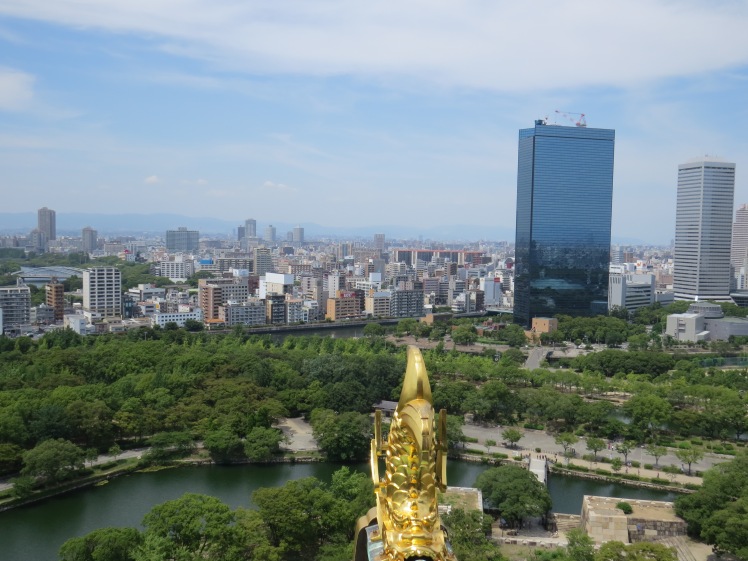

Back in the summer of 2013, I took a 2-week trip through Japan, my final one before coming to China to work. It’s fair to say I’ve lagged pretty badly in posting about it. I even wrote a newspaper travel article about the trip last year. The trip was also my last long overseas trip, barring my last visit back to Taiwan for medical reasons.
In short, my trip went like this. I touched down in Osaka, spent a few days there, then went on to Kyoto and did the same. From there, I went to Matsumoto, a scenic holiday town, and visited Mt Tateyama and the Kurobe Dam, then moved on to Tokyo. From Tokyo, I went to climb Mt Fuji, then returned to Tokyo.
I should point out that while Japan is not a cheap place to travel in, I was able to use up less than a month’s salary for my trip. I flew by budget airlines, and mostly stayed in lower-end but decent hotels (my drab Tokyo hotel was the most expensive at $50 a night). Only at the foot of Mt Fuji did I stay at a hostel.
I flew from Taipei to Osaka on a Friday evening, via Peach Airlines. While Japanese are in general extremely polite people, there was a very disgruntled passenger who argued with the hostesses and who then continued arguing after we touched down and he was met by a male staff. It was all in Japanese so I couldn’t understand anything, though I saw how accommodating the female Japanese stewardesses were towards him. It would not be the first time in Japan I would see an incident like this involving a male passenger and female staff.
Anyways, after landing in Osaka’s artificial island-based airport, I collected my stuff quickly, went through immigration and then had to be searched at customs. I think Japan is one of the few countries where you need to undergo this when leaving the airport. It happened to me many years ago when I went to Japan as part of a Taiwan tour group. While I had my luggage searched, I noticed a few passengers who were taken to a nearby compartment, probably to be body-searched.
The customs officer was a friendly guy who asked me a few questions. He was amused when he saw my jacket and pointed out Japan is hot in the summer. When I said I was planning to climb Mt Fuji, he seemed impressed. After he asked me questions, he then took out a folder filled with photos of weapons and drugs and asked me if I was carrying any of those. No, no, no, I replied as he pointed to a photo of a gun, a knife and explosives and I started laughing, though not too loudly. “Sorry, I’m just doing my job,” he said, probably a little embarrassed. I was impressed when he said that as his English wasn’t that good but it showed he could make conversation.
As it was already past 11, I scrambled to take the airport train to the city. I managed to get on the last train with minutes to spare, then got out at my stop. This is where things got a little interesting. Now, Japan is a wealthy country with a high level of development.
But when I stepped out of the station onto the street, the first thing I smelt was urine and the first thing I saw was a homeless old man, or maybe he was a drunk, sitting on the sidewalk. Apparently this was in an old, working-class neighborhood in Osaka, and it certainly looked so. I used Google Maps and Streetview extensively while doing research for the trip, so I tried following the directions to my hotel but I got a bit lost.
I walked into a Family-Mart convenience store where I showed my printed hotel map to two young clerks who spoke no English and pored over my map enthusiastically but weren’t able to recognize the place.
At this point, it was almost midnight and I ended up walking back to the station exit and heading into a different direction. I did find my hotel though I had a brief scare when I saw the front desk was closed. Luckily I was able to press a bell and a staff came out and sleepily checked me in.
The next day, I set out for Osaka Castle. It’s an attractive castle surrounded by a moat in the middle of a massive park, with a few smaller buildings scattered. One of these was the Osaka International Peace Center, which I was going to first. It is a small museum that commemorates World War II by showing Japan’s beginning of the war in Asia, the city’s damage from retaliatory US bombing and more importantly and impressively, displays photos and information about Japan’s aggression in China, Korea and across Southeast Asia in that war. Japan has a reputation for downplaying what it did during the war, but in this museum, the photos showed graphic evidence of what they did, such as dead Chinese and wretched prisoners of war. There was also a display on Auschwitz, the German Nazi prisoner camp in Poland where lots of Jews were killed, and a room full of black-and-white photos of momentous events in the late 20th century. Above the photos were “doomsday clocks,” a clock devised by an American science magazine that showed how close to doomsday or nuclear war the world was at the moment by how close the minute hand was to the starting point (12 o’clock) – the more conflicts in the world, the closer it would be to doomsday. The time for the clock for 2013 was 11.55.

It admits Japan did bad things in Asia though the wording is vague plus it mentions the Japanese who died too (they wouldn’t have if Japan hadn’t started the war). It’s a bit half-hearted though at least it’s a start.

The section on what the Japanese did in China. The photos explicitly show the horrors done to Chinese.
After leaving the peace museum, I walked through what seemed like a forest for a while before eventually reaching the castle moat. I saw the moat first, a wide channel upon which a mighty sloping stone wall stood on the other side. The castle was in the middle of a complex within the stone wall that was itself surrounded by another moat, but smaller. Inside this second moat, the castle stood proudly atop a stone base, six stories each topped by a green tiled roof with gold decorations. At the top level was a viewing platform that gave a great 360-degree view of the surroundings.


Outer moat

Inner moat



As impressive as the castle is, the fact was it was a recent replica built in 1931. Originally built in 1585, it was destroyed after a mighty battle in the Summer War of Osaka. It was then rebuilt but was again destroyed by fire from a lightning strike in 1665. It was restored again in 1931 but then destroyed again in 1945 from airplane bombs during World War II. Finally, in 1997, it was rebuilt according to the original specifications and designs. This is therefore the fourth version of the castle and less than 20 years ago.
The castle’s original importance stems from the fact its roots involve two of Japan’s three greatest warlord unifiers. The castle was built by Toyotomi Hideyoshi, one of the great warlords. Toyotomi died while it was being completed and it passed to his son Hideyori. However, Tokugawa Ieyasu, the third of the great warlords, attacked Hideyori in 1614, besieging the great castle. After a prolonged siege, they came to an understanding and Tokugawa withdrew. However, a year later, Hideyori decided to restore the castle’s defenses and Tokugawa attacked again in what is called the Summer War of Osaka. This time, Tokugawa won and completely annihilated the Toyotomi clan. This year incidentally is the 400th anniversary of this great battle.
The inside of the castle reflects the sad end of its original owner, with paintings depicting the siege and the final battle as the Toyotomi warriors were routed and their family members killed. There are images of the various banners used on each sides and detailed information on the generals in the armies and how they fared.


The area around the castle featured vendors, people in samurai and ninja costumes and even street performers. There were a good bit of people, but not crowded, which is probably the best condition at tourist attractions.

Cosplay samurai near the castle
I then proceeded to the Osaka Museum of History, a tower across the street from the southwestern corner of the castle park. So far, it is the only museum I’ve been to that is in an entire tower, and it has a unique elliptical shape, covered in what looked to be brownish tiles but with one edge glassed, and is next to the NHK Osaka tower. The tower is over 10 stories, and you start from the top and make your way down.

Osaka history museum on the left and NHK Osaka on the right, joined to each other by the round entrance lobby.
As expected, it covers Osaka’s history from the early hundreds (400AD onwards). Interestingly, I found out that Osaka was one of Japan’s earliest capitals in the 7th and 8th century, when it was known as Naniwa. Historical artifacts were kind of sparse though the displays of early 20th century Osaka were quite interesting. What it lacked in ancient pieces, the museum made up for in life-size replicas of boats and shops and entire pavilions recreating society in different times.


As I was leaving, there was some cosplay gathering outside. As I was looking back, I saw a family of ninja and I quickly took a photo of them. Rather than be annoyed, they were all smiles and decided to pose, and I took another one. I’d heard how Japanese can be reserved and polite, but not warm, but that family (I assume they were) definitely broke that stereotype. That remained my best experience with Japanese strangers during that whole trip hence why their photo is the second one at the top of this post.

Osaka Castle and the park from the history museum across the street

Information on the generals who fought in the final battle at the castle

A shrine near the castle, probably dedicated to the warrior in front



Osaka Castle, elegant and historic, but flanked by modern concrete and glass


The blue tower is a beautiful building. Not to mention there’s a motorized crane perched on top of it.

Exit of the park with guard building at the side
That is such a beautiful and majestic castle ~ reminds me of the short time I spent in Kyoto years ago…wonderful set of photos here.
LikeLike
Thanks for the comment. It is a majestic castle indeed. I assume you took a lot of good photos in Kyoto. I went on to Kyoto after Osaka – look out for those posts later.
LikeLike
Look forward to the Kyoto post ~ was there with friends and for a meeting and did not get out to shoot, so its all in my mind right now 🙂
LikeLiked by 1 person